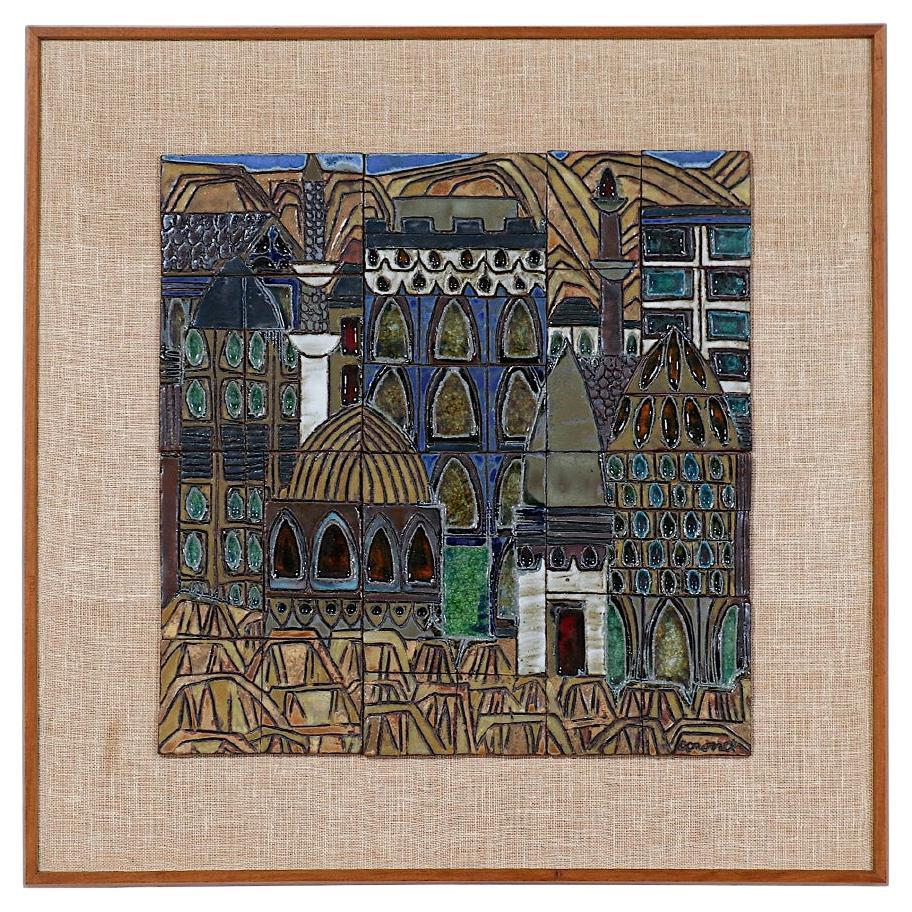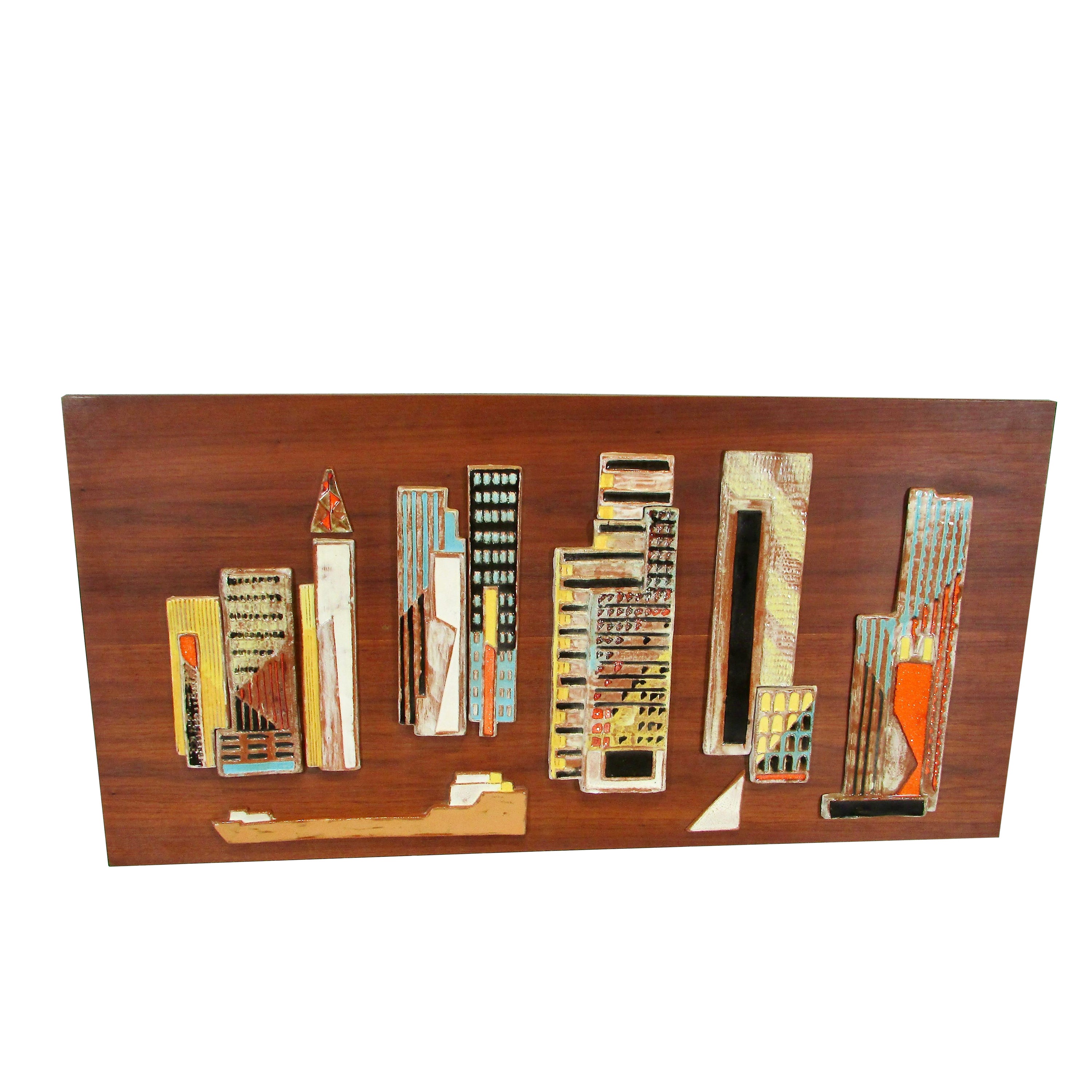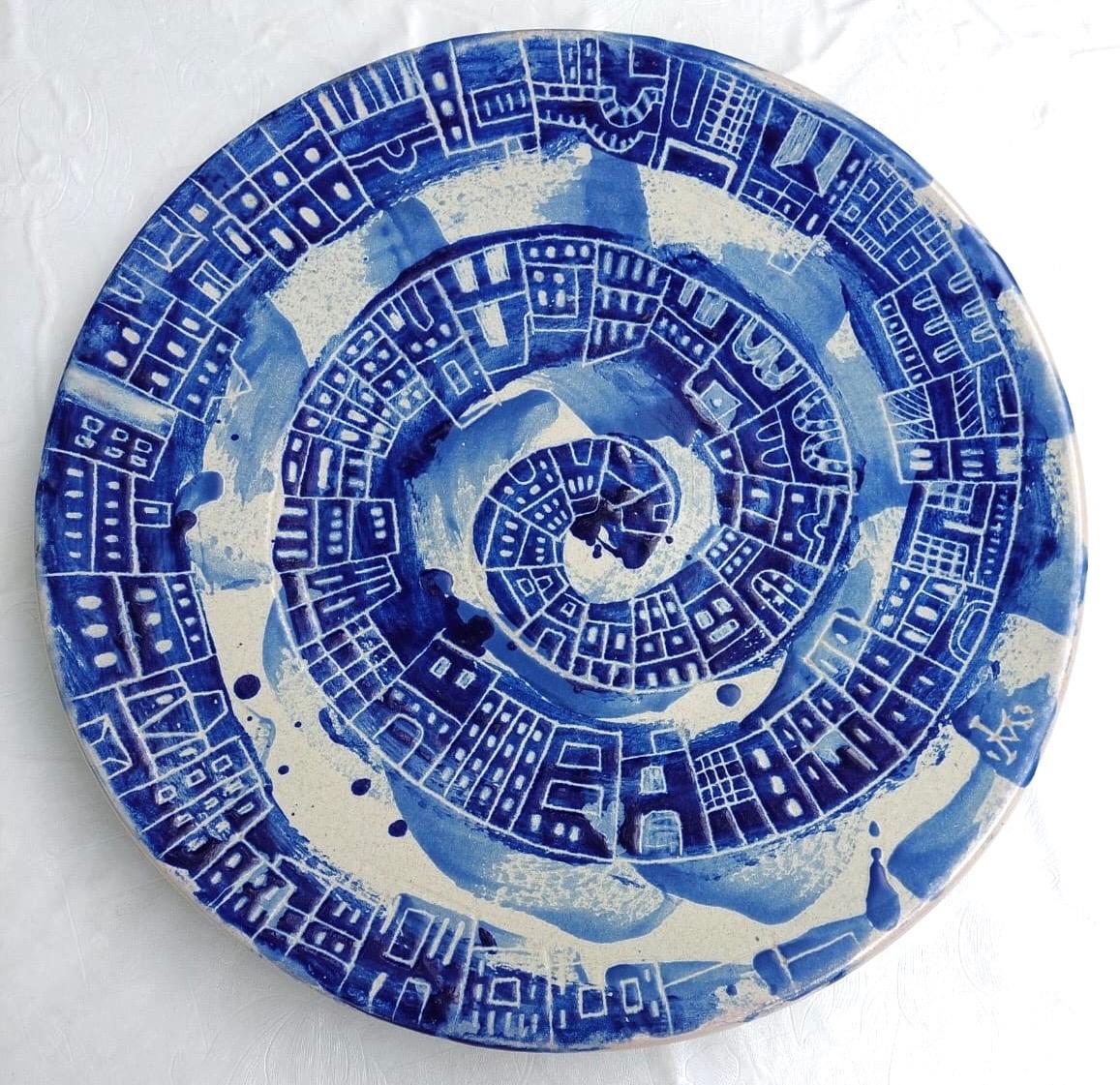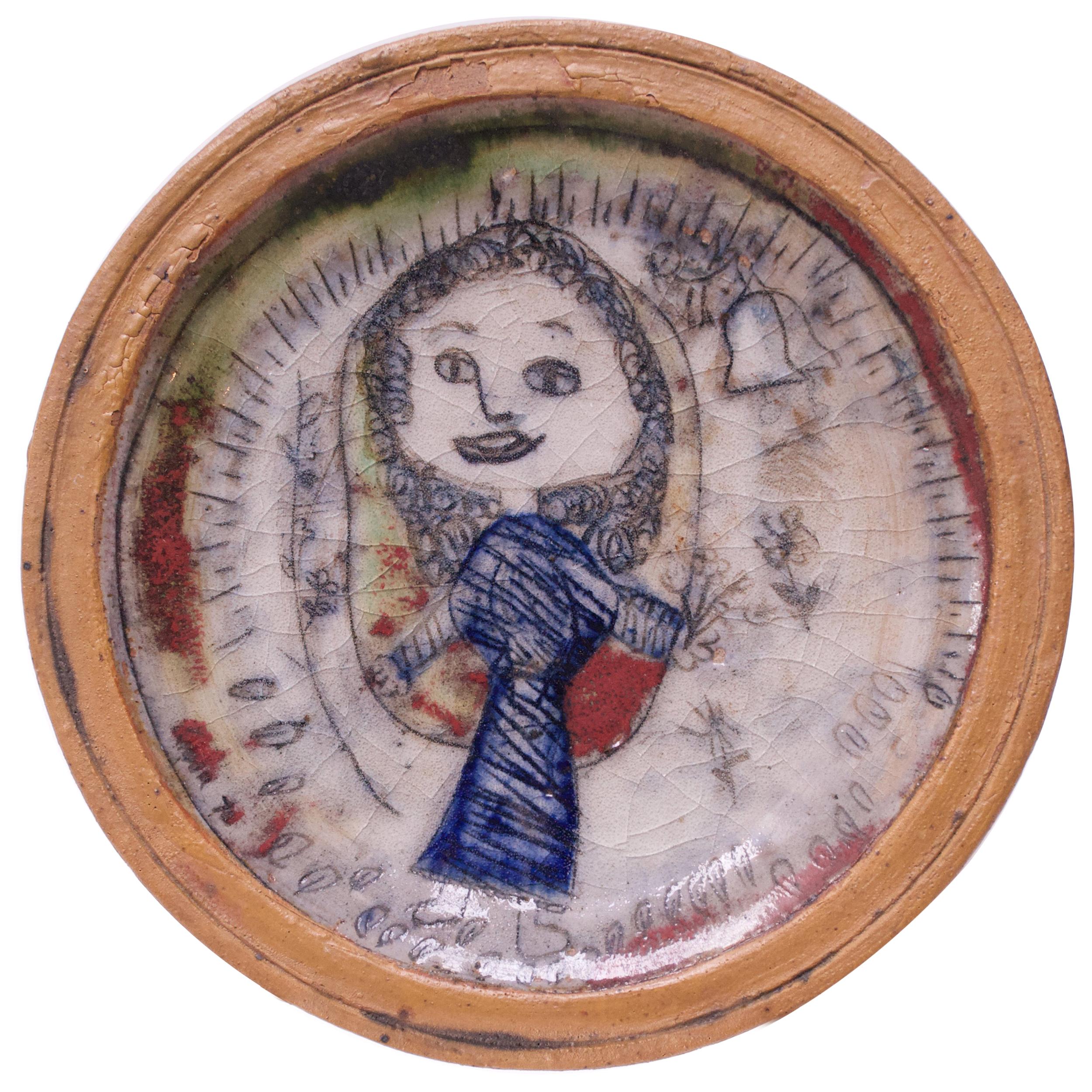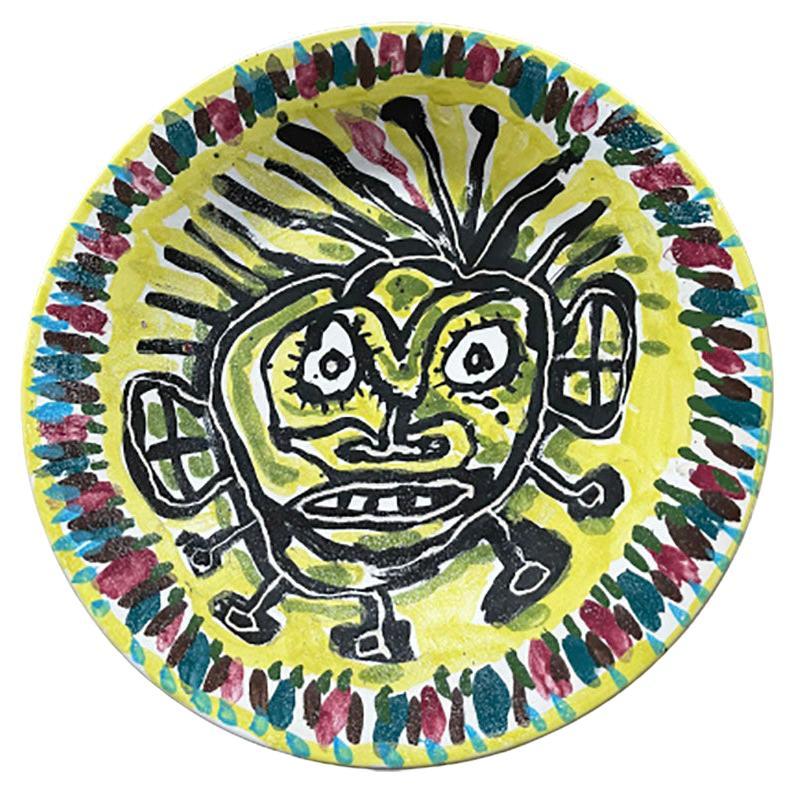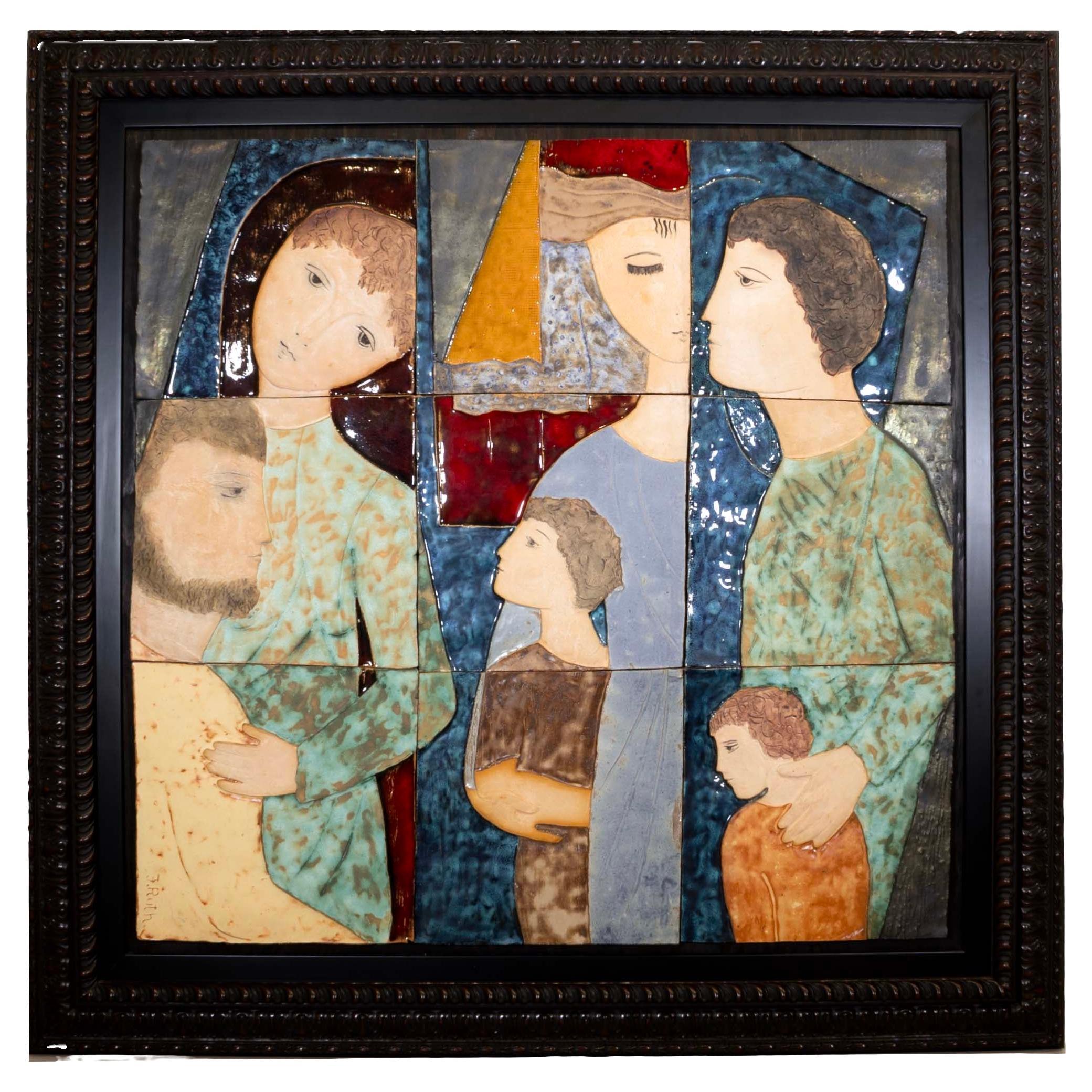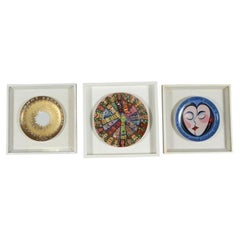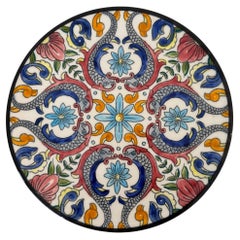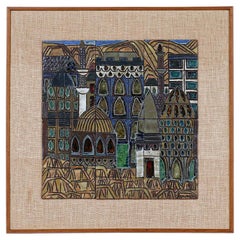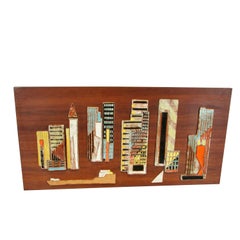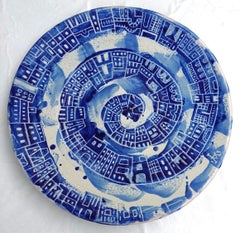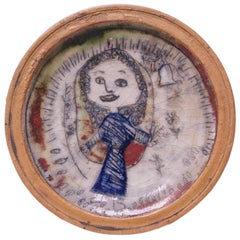Items Similar to JAMES RIZZI "City People" Rosenthal Germany Collectible Plate Limited Edition
Video Loading
Want more images or videos?
Request additional images or videos from the seller
1 of 22
JAMES RIZZI "City People" Rosenthal Germany Collectible Plate Limited Edition
$349
£264.81
€302.79
CA$487.46
A$541.99
CHF 283
MX$6,597.31
NOK 3,610.90
SEK 3,383.24
DKK 2,259.78
Shipping
Retrieving quote...The 1stDibs Promise:
Authenticity Guarantee,
Money-Back Guarantee,
24-Hour Cancellation
About the Item
JAMES RIZZI "City People" Rosenthal Germany Collectible Plate Limited Edition.
1970s Rosenthal collectible porcelain plate 'City People', designed by James Rizzi,
Executed by Rosenthal, Germany, limited edition, no./1500
Limited edition, signed and numbered.
Framed plate is in excellent condition, plate size is 12".
Frames is not in good condition, white became yellowish shows wear.
About James Rizzi: AMERICAN, 1950-2011
James Rizzi (October 5, 1950 – December 26, 2011) was an American pop artist who was born and raised in Brooklyn, New York.
Best known for his vibrant, youthful graphics and his three-dimensional prints. He was the official artist for the 1996 Olympic Games in Atlanta, adorning the famous logo with his noodle-like drawing style.
Rizzi was most famous for his 3D artwork, "especially the large, elaborate prints and teeming anthropomorphic cityscapes. His merry maximalism and delight in delirious detail and elaborate minutiae created a true art brand, a trademark style as recognizable as any in the world."
About Rosenthal:
German porcelain manufactory Rosenthal was originally founded as a ceramics-painting studio by Philipp Rosenthal Sr. (1855-1937) in 1879 at Schloss Erkersreuth in Bavaria, near the Czech border. Its first highly popular product was an ashtray inscribed with the words “Resting place for lit cigars.” In 1890, the company moved to the neighboring hamlet of Selb and, a year later, began to manufacture its own porcelain, since white porcelain was, at that time, in short supply. Rosenthal’s first complete table service was called Empire; it was exhibited along with other lines at Paris’s Exposition Universelle in 1900.
With the dawn of the 20th century, Rosenthal began producing porcelain tableware and services formed and decorated in the latest styles, like the Jugendstil Botticelli (1903), the Art Nouveau Darmstadt (1905), and the all-white Maria (1916) lines. Successes with this au courant approach led the company to launch an art pottery division in 1910, dedicated to luxury tableware, vases, and other decorative objects. By the 1930s, figurines were another important Rosenthal product, most notably the Disney-licensed Mickey Mouse pieces introduced in 1931.
In 1934, Philipp Rosenthal was forced to leave his company and country when his Jewish ancestry came under persecution by the Nazi regime. Despite the loss of its founder, the Rosenthal company remained the premier supplier of high-quality porcelain tableware to the Third Reich. After the war, in 1950, Philip Rosenthal Jr. (1916-2001) joined his father's company as an advertising manager. By 1958, he had become its CEO, continuing his father’s vision to produce high-quality porcelain in line with progressive tastes. Through the rest of the 20th century, Rosenthal was the most commercially successful porcelain producer in Germany.
In the postwar era, Rosenthal’s most famous tableware lines have included 2000 by Raymond Loewy and Richard Latham (1954), Magic Flute by Bjørn Wiinblad (1959), Suomi by Timo Sarpaneva (1976), and Moon by Jasper Morrison (1997). The company has enjoyed many popular and critically acclaimed collaborations with designers and brands, like Salvador Dalì, Tapio Wirkkala, Walter Gropius, Andy Warhol, Ron Arad, Enzo Mari, Konstantin Grcic, and Versace.
Rosenthal's product lines have encompassed more than ceramics over the years. In 1972, the company began producing furniture, under the subsidiary Rosenthal Einrichtung, in Espelkamp, Germany. Standouts from this arm of Rosenthal include Gunter Ferdinand Ris and Herbert Selldorf’s futuristic Sunball Lounge Chair (1969), Verner Panton’s Relaxer Rocking Chair (1974), Burchard Vogtherr's Vario Pillo Sectional Sofa (1970s), Vico Magistretti’s lightweight Faun Chair (1970s), and Erwin Nagel’s multifunctional Quadrondo Table (1980s). Later, Rosenthal focused on the production of high-quality office furniture, as well as decorative accessories for private interiors.
In 1997, Rosenthal became an independent arm of the Waterford Wedgwood holding company, but in 2009 faced bankruptcy as the Irish parent began to fall apart. At this time, Rosenthal was sold to Italian housewares group Sambonet Paderno Industrie. Unfortunately, Rosenthal Einrichtung was desolved and only a limited archive of the company's archive was kept intact.
Today, Rosenthal GmbH offers a small, exclusive range of furniture options under the label of Rosenthal Interieur, alongside its classic porcelain and tabletop collections.
- Dimensions:Height: 17.75 in (45.09 cm)Width: 16.75 in (42.55 cm)Depth: 2.25 in (5.72 cm)
- Style:Expressionist (In the Style Of)
- Materials and Techniques:
- Place of Origin:
- Period:
- Date of Manufacture:1970
- Condition:Wear consistent with age and use.
- Seller Location:North Hollywood, CA
- Reference Number:Seller: GA8231stDibs: LU906835541352
About the Seller
5.0
Platinum Seller
Premium sellers with a 4.7+ rating and 24-hour response times
1stDibs seller since 2011
3,060 sales on 1stDibs
Typical response time: 1 hour
- ShippingRetrieving quote...Shipping from: North Hollywood, CA
- Return Policy
Authenticity Guarantee
In the unlikely event there’s an issue with an item’s authenticity, contact us within 1 year for a full refund. DetailsMoney-Back Guarantee
If your item is not as described, is damaged in transit, or does not arrive, contact us within 7 days for a full refund. Details24-Hour Cancellation
You have a 24-hour grace period in which to reconsider your purchase, with no questions asked.Vetted Professional Sellers
Our world-class sellers must adhere to strict standards for service and quality, maintaining the integrity of our listings.Price-Match Guarantee
If you find that a seller listed the same item for a lower price elsewhere, we’ll match it.Trusted Global Delivery
Our best-in-class carrier network provides specialized shipping options worldwide, including custom delivery.More From This Seller
View AllRosenthal Collectible Framed Plates, Set of 3
By Rosenthal
Located in North Hollywood, CA
Rosenthal collectible, set of three framed German plates.
One by Vasarely, 1936.
"Leben und Leben lassen, Liben und Lieben lassen"
Limited edition, s...
Category
Vintage 1980s German Modern Contemporary Art
Materials
Porcelain
$1,650 / set
Italian Art Studio Pottery Vintage Plate in Fanciullacci Style
Located in North Hollywood, CA
1950s Mid-Century Modern handcrafted and hand-decorated large bowl in the style of Fratelli Fanciullacci.
Vintage handcrafted Italian art studio pottery, Florence.
Bands with vertica...
Category
Vintage 1950s Italian Mid-Century Modern Decorative Bowls
Materials
Ceramic
Vintage Spanish Ceramar Talavera Wall Plate Hand-Painted 7 in. Jewel Tone Colors
Located in North Hollywood, CA
Vintage Spanish Ceramar Talavera Wall Plate Hand-Painted, Jewel Tone Colors, Wired and Ready to Hang.
Decorative Ceramic Wall Plate, Spanish Folk Art, Talavera Pottery, Vintage Cera...
Category
Late 20th Century Spanish Spanish Colonial Decorative Art
Materials
Ceramic
Majolica Deruta Raffaellesco Decorative Ceramic Wall Plate 14'75 inches
Located in North Hollywood, CA
A large vintage Deruta Raffaellesco decorative wall plate with scalloped rim.
Majolica hand-painted with magnificent detailing and artwork, extraordina...
Category
Mid-20th Century Italian Folk Art Decorative Art
Materials
Ceramic
1970s VASARELY "Live and let live love and let love" Rosenthal Framed Plate
By Rosenthal, Victor Vasarely
Located in North Hollywood, CA
1970s VICTOR VASARELY "Live and let live love and let love".
Rosenthal collectible framed German plate.
Victor Vasarely Rosenthal Studio Line Limited Edition Porcelain Plate.
By Vasarely born 1936.
"Leben und Leben lassen, Lieben und Lieben lassen"
"Live and let live - love and let love".
Limited edition, signed and numbered.
Plate is in good condition, size is 12".
Frame is not in good condition, white became yellowish shows wear.
Victor Vasarely, born as Győző Vásárhelyi on April 9, 1906, in Pécs, Hungary, was a Hungarian-French artist widely regarded as the "father of Op Art" (Optical Art). He is known for his pioneering work in geometric abstraction and the use of optical illusions to create visually captivating and dynamic artworks.
Vasarely's early career involved studying medicine in Budapest, but he later decided to pursue his passion for art and enrolled in the Műhely (Workshop) academy in Hungary. He initially experimented with various styles, including Impressionism and Post-Impressionism, but his interest in geometric abstraction grew stronger over time.
In the 1930s, Vasarely moved to Paris, where he continued to explore geometric patterns, lines, and shapes in his art. He believed that art should not merely imitate nature but should create its own language of forms and colors to engage the viewer's perception actively. This philosophy led to the development of Op Art, a movement that emerged in the 1960s and focused on creating optical illusions and visual effects through precise geometric patterns and colors.
Vasarely's artworks often featured meticulously arranged geometric shapes, giving the impression of movement and three-dimensionality. He employed various optical tricks, such as the juxtaposition of contrasting colors and the use of repetition, to create an illusion of depth and visual dynamism. His artworks can evoke a sense of visual vibration and often challenge the viewer's perception.
Throughout his career, Vasarely's influence extended beyond the art world. He believed in the democratization of art and wanted to make art accessible to a wider audience. He embraced mass production techniques, creating what he called "multiple originals" or "serigraphs" (a form of screen printing). These serigraphs allowed him to produce multiple copies of his artworks at affordable prices, making them more accessible to art enthusiasts.
Vasarely's artistic legacy continues to be celebrated around the world. His work has been exhibited in numerous galleries and museums, and he remains an influential figure in the fields of Op Art and abstract geometric art. He passed away on March 15, 1997, in Paris, leaving behind a vast body of work that continues to captivate audiences and inspire artists to this day.
About Rosenthal:
German porcelain manufactory Rosenthal was originally founded as a ceramics-painting studio by Philipp Rosenthal Sr. (1855-1937) in 1879 at Schloss Erkersreuth in Bavaria, near the Czech border. Its first highly popular product was an ashtray inscribed with the words “Resting place for lit cigars.” In 1890, the company moved to the neighboring hamlet of Selb and, a year later, began to manufacture its own porcelain, since white porcelain was, at that time, in short supply. Rosenthal’s first complete table service was called Empire; it was exhibited along with other lines at Paris’s Exposition Universelle in 1900.
With the dawn of the 20th century, Rosenthal began producing porcelain tableware and services formed and decorated in the latest styles, like the Jugendstil Botticelli (1903), the Art Nouveau Darmstadt (1905), and the all-white Maria (1916) lines. Successes with this au courant approach led the company to launch an art pottery division in 1910, dedicated to luxury tableware, vases, and other decorative objects. By the 1930s, figurines were another important Rosenthal product, most notably the Disney-licensed Mickey Mouse pieces introduced in 1931.
In 1934, Philipp Rosenthal was forced to leave his company and country when his Jewish ancestry came under persecution by the Nazi regime. Despite the loss of its founder, the Rosenthal company remained the premier supplier of high-quality porcelain tableware to the Third Reich. After the war, in 1950, Philip Rosenthal Jr. (1916-2001) joined his father's company as an advertising manager. By 1958, he had become its CEO, continuing his father’s vision to produce high-quality porcelain in line with progressive tastes. Through the rest of the 20th century, Rosenthal was the most commercially successful porcelain producer in Germany.
In the postwar era, Rosenthal’s most famous tableware lines have included 2000 by Raymond Loewy and Richard Latham (1954), Magic Flute by Bjørn Wiinblad (1959), Suomi by Timo Sarpaneva (1976), and Moon by Jasper Morrison (1997). The company has enjoyed many popular and critically acclaimed collaborations with designers and brands, like Salvador Dalì, Tapio Wirkkala, Walter Gropius, Andy Warhol, Ron Arad, Enzo Mari, Konstantin Grcic, and Versace.
Rosenthal's product lines have encompassed more than ceramics over the years. In 1972, the company began producing furniture, under the subsidiary Rosenthal Einrichtung, in Espelkamp, Germany. Standouts from this arm of Rosenthal include Gunter Ferdinand Ris and Herbert Selldorf’s futuristic Sunball Lounge Chair (1969), Verner Panton’s Relaxer Rocking Chair (1974), Burchard Vogtherr's Vario Pillo...
Category
Late 20th Century German Post-Modern Decorative Art
Materials
Porcelain
Jerusalem Art Framed by Obolski Israel
Located in North Hollywood, CA
Jerusalem art framed by Obolski Israel.
Category
Late 20th Century Israeli Modern Decorative Art
Materials
Paper
You May Also Like
Raul Coronel "Jeweled Village" Ceramic Wall Plaque Art
By Raul Coronel
Located in Los Angeles, CA
Raul Coronel "Jeweled Village" ceramic wall plaque Art.
Category
Vintage 1960s American Mid-Century Modern Decorative Art
Materials
Ceramic, Wood, Walnut
Large Harris Strong wall hanging colorful glazed ceramic riverfront city scape
By Harris Strong
Located in Ferndale, MI
Stylized riverfront city scape of glazed and fired Terra cotta . Eight buildings with a freighter passing by . The white triangle possibly a sailboat . Glazed in vivid colors assembl...
Category
Mid-20th Century American Mid-Century Modern Wall-mounted Sculptures
Materials
Ceramic, Pottery
"Ceramic #14" 2017 original handmade signed unique Talavera plate 18x18x2in
By Luis Miguel Valdes
Located in Miami, FL
Luis Miguel Valdes (Cuba, 1949)
"Ceramic #14", 2017
Ceramic plate in Uriarte's Talavera
17.72 × 17.72 × 1.8 in (45 × 45 × 4.5 cm)
Hand-signed by author
______________________________...
Category
2010s Contemporary Figurative Sculptures
Materials
Enamel
1970 Outsider Art Figural Stoneware Decorative Plate
Located in Brooklyn, NY
Charming outsider art charger / decorative plate depicting a jovial young girl. Pleasant color palette and figure with age-appropriate crazing to the glaze...
Category
Vintage 1970s American Folk Art Ceramics
Materials
Stoneware
Ceramic Wall Plate by Lucebert, 1990, The Netherlands
Located in Delft, NL
A ceramic wall plate by Lucebert, 1990, The Netherlands
A wall plate painted and glazed. The signature of Lucebert and dated 1990 on the reverse
...
Category
Late 20th Century Dutch Wall-mounted Sculptures
Materials
Ceramic
Ruth Faktor Faktorowicz Large Modernist Israeli Figurative Ceramic Tile Wall Art
Located in Keego Harbor, MI
A large whimsical modernist figurative ceramic tile wall art installation by Israeli artist Ruth Faktor (Faktorowicz). A unique composition with a theme of...
Category
Late 20th Century Israeli Wall-mounted Sculptures
Materials
Porcelain
